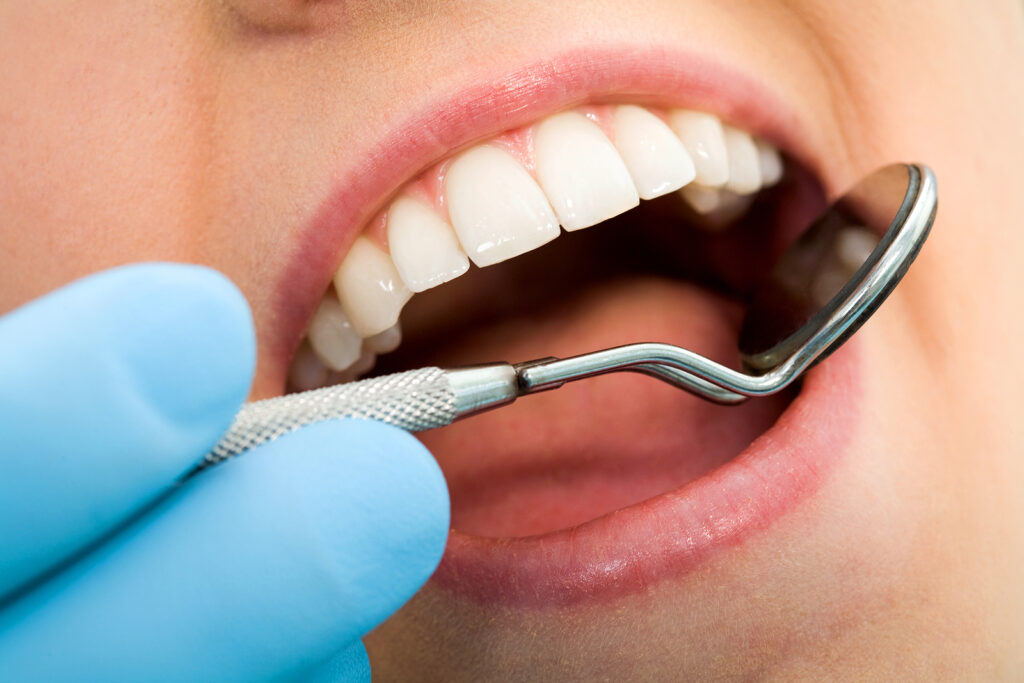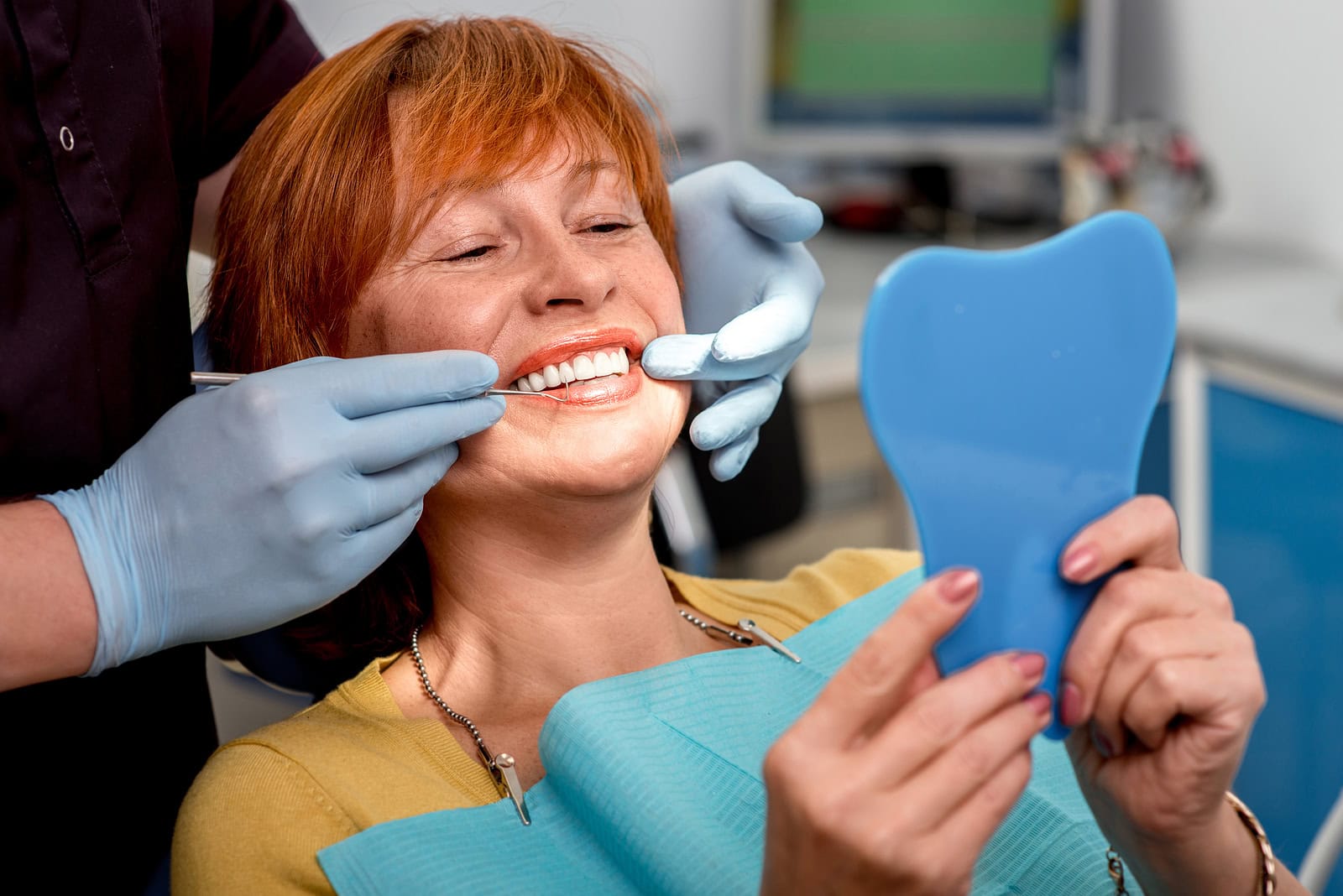Every implant patient has at least one big question: “When will I be completely healed?” The answer depends on how your body responds during the five clear stages of recovery. Follow the practical tips below, and you will move from surgery day to a strong, worry-free bite as efficiently as possible.
Healing Timeline at a Glance
| Stage and Time Frame | What Your Body Is Doing | How You Support Healing |
| Stage 1 – Immediate recovery, first 24–48 h | A blood clot forms; mild bleeding and tenderness develop | Rest, keep your head elevated, place cold packs 15 min at a time |
| Stage 2 – Initial healing, days 3–7 | Swelling peaks; soft tissue begins sealing | Soft diet, warm salt-water rinses, prescribed medication |
| Stage 3 – Early bone integration, weeks 2–6 | Gum swelling fades; bone starts bonding to the implant | Brush with a soft brush, floss sideways, avoid very hard foods |
| Stage 4 – Osseointegration, months 2–4 | Jawbone fuses securely to the titanium post | Strict oral hygiene, routine professional cleanings |
| Stage 5 – Crown placement, about four months | Custom crown is attached; full function returns | Test your bite, follow the maintenance plan your dentist provides |
Stage-by-Stage Details and Self-Care
Stage 1: Immediate Recovery (0–48 Hours)
- Control bleeding: bite on gauze for 30 minutes, change pads until oozing stops.
- Ice application: hold a cold pack on the cheek 15 minutes on, 15 minutes off during waking hours.
- Pain management: take the first prescribed dose before the anesthetic fades to stay ahead of discomfort.
- Fluid intake: sip cool water; avoid carbonated drinks, alcohol, and using a straw.
- Oral hygiene: gently rinse with a teaspoon of salt in a cup of warm water after 24 hours, do not swish forcefully.
- Activity level: rest with your head elevated on two pillows; postpone lifting, bending, and aerobic exercise.
Stage 2: Initial Healing (Days 3–7)
- Monitor swelling: cheeks may look puffy until day 3; switch from cold packs to warm compresses once swelling peaks.
- Soft-food list: smoothies, yogurt, cottage cheese, mashed potatoes, scrambled eggs.
- Medication check: finish the full antibiotic course if your dentist prescribed one.
- Brushing routine: use an extra-soft brush, avoid the surgical site, but keep other teeth clean.
- Hydration goal: eight glasses of water daily, which promotes tissue repair.
- Red-flag symptoms: call immediately for persistent bleeding, increasing pain, or foul odor.
Stage 3: Early Bone Integration (Weeks 2–6)
- Diet expansion: add pasta, steamed vegetables, ripe bananas, and flaky fish.
- Gentle flossing: slip floss between teeth then slide it out sideways, never lift upward against the implant area.
- Mouthwash choice: alcohol-free antimicrobial rinses reduce bacterial load without drying tissues.
- Speech practice: reading aloud helps your tongue adapt if the implant is in the front zone.
- Workouts: light cardio is acceptable after two weeks; still avoid heavy power-lifting that spikes blood pressure.
- Follow-up visit: most dentists schedule a quick check around week 4 to confirm soft-tissue health.
Stage 4: Osseointegration (Months 2–4)
- Bite awareness: chew on both sides, but skip very hard items like ice or unpopped popcorn kernels.
- Professional cleaning: a hygienist can polish around the healing cap with special implant-safe instruments.
- Dry mouth prevention: sip water often, use sugar-free lozenges if you take medications that reduce saliva.
- Night guard: consider a custom guard if you clench or grind, protecting the bonding bone.
- Vitamin checklist: ensure sufficient calcium, vitamin D, and vitamin C; your dentist can advise supplements.
- Progress imaging: a small X-ray may be taken to verify bone growth around the implant threads.
Stage 5: Crown Placement and Final Recovery (≈ 4 Months and Beyond)
- Abutment fit: a small connector post is attached; slight gum tenderness is normal for 24 hours.
- Digital impression: a scanner captures tooth color and shape so the lab matches neighboring teeth.
- Try-in session: your dentist verifies bite contact with articulating paper; minor adjustments ensure comfort.
- Cement or screw seal: the crown is fixed permanently or with a tiny access screw that your dentist can service later.
- Long-term maintenance: brush twice daily with low-abrasive paste, floss under the crown using implant threaders or water flossers.
- Recall interval: schedule professional cleanings every six months and annual X-rays to monitor bone stability.
Eating Guide & Factors Affecting Your Healing

Factors That Can Slow Healing
- Poor oral hygiene
- Smoking
- Medications such as steroids or bisphosphonates
- Systemic conditions like uncontrolled diabetes
If complications arise, consult our guide on managing dental implant complications for detailed solutions.
Everyday Eating Guide
- Early recovery: smoothies, blended soups, yogurt
- Mid-recovery: scrambled eggs, oatmeal, flaky fish
- Later recovery: tender chicken, soft fruits, cooked rice
Continue to avoid ice cubes, popcorn, nuts, caramel, and chewy bagels until your dentist clears you.
Nutritional Support
Your immune system needs key micronutrients during recovery. See our article on the vitamins you need for dental implant healing for a simple supplement checklist.
When Is the Implant Site Considered Completely Healed?
Complete healing occurs when the bond between your implant and jawbone is fully established. Your dentist will confirm successful integration before proceeding with crown placement.
The healing timeline can vary from patient to patient based on individual factors. Your dentist will monitor your progress and determine when you’re ready for the final restoration.
X-rays and clinical examination help your dentist ensure your implant is ready for the permanent crown.
Final Thoughts: Supporting Your Implant Healing Journey
Understanding the dental implant healing stages helps you maintain realistic expectations and follow proper care protocols. Each phase serves an important purpose in creating your permanent tooth replacement.
Following your dentist’s instructions, maintaining excellent oral hygiene, and attending all follow-up appointments significantly improve your chances of successful healing.
At Elegant Edge Cosmetic & Family Dentistry, we’re committed to supporting you throughout your entire dental implant recovery journey. For patients seeking dental implants in Rochester Hills, our experienced team guides you through each stage of the healing process.
Not everyone is an ideal candidate for this procedure, so it’s important to understand the key factors for dental implant candidacy before beginning treatment.
If you experience any concerns during your recovery, don’t hesitate to contact our office. We’re here to ensure your dental implant process proceeds smoothly and successfully.
Frequently Asked Questions
How long does dental implant healing take?
The healing process typically takes several weeks to months, with the bond between your implant and jawbone growing stronger over time. Individual healing varies based on factors like overall health and following post-operative care instructions.
What can I eat immediately after dental implant surgery?
Stick to soft foods and liquids for the first week, including smoothies, yogurt, soup, and mashed potatoes. Avoid hard, crunchy, or sticky foods that could disturb the healing site.
Is pain normal during dental implant healing?
Mild discomfort is normal for the first few days after surgery. Most patients manage any discomfort well with prescribed medications and over-the-counter pain relievers as directed by their dentist.
When can I return to normal activities after implant surgery?
Most patients return to work within a few days and resume normal activities within the first week. Avoid strenuous activities initially to prevent complications.
How do I know if my dental implant is healing properly?
Signs of proper healing include a decrease in discomfort, no persistent bleeding, and a gradual return to normal function. Your dentist will monitor progress during follow-up appointments.
Can smoking affect dental implant healing?
Yes, smoking significantly increases the risk of implant complications and should be avoided during the healing period. It can interfere with the vital bonding process between your implant and jawbone.
